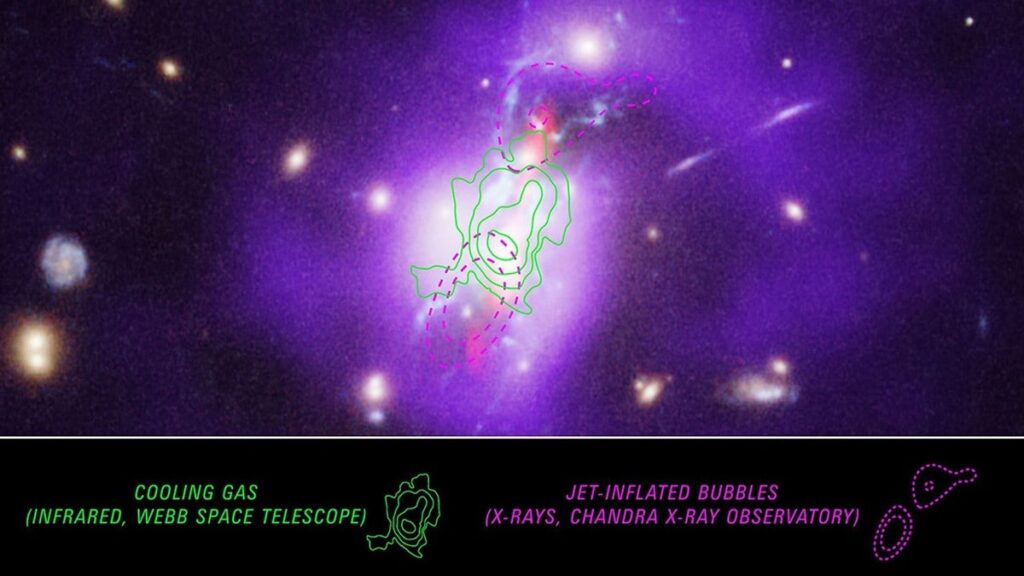Researchers using NASA’s James Webb Space Telescope have provided insights into the rapid star formation within the Phoenix galaxy cluster, a phenomenon that has puzzled scientists for years. The cluster, located 5.8 billion light-years from Earth, contains a supermassive black hole of roughly 10 billion solar masses, which typically suppresses star formation by heating surrounding gas. However, data from Webb, combined with observations from the Hubble Space Telescope, Chandra X-ray Observatory, and ground-based telescopes, have revealed cooling gas flows that fuel star birth, challenging long-held theories about galaxy cluster evolution.
Cooling Gas Mapped in Phoenix Cluster
According to findings published in Nature, spectroscopic data from Webb has provided a detailed map of cooling gas within the cluster. This cluster, located 5.8 billion light-years away, contains a supermassive black hole of approximately 10 billion solar masses at its core. In most clusters, such black holes release high-energy radiation that prevents gas from cooling enough to form stars. However, in the Phoenix cluster, an exceptionally high star formation rate has been observed, raising questions about the underlying process.
As reported by NASA, Michael McDonald, principal investigator of the study and an astrophysicist at the Massachusetts Institute of Technology, stated that previous observations had shown inconsistent cooling rates at different temperatures. He compared the process to a ski slope where more people arrive at the top via a lift than reach the bottom, implying that a key element of the process was missing.
Webb’s Observations Reveal Missing Gas
As per the study, Webb has identified the intermediate-temperature gas that bridges the gap between the hottest and coldest phases of star formation. Observations using Webb’s Mid-Infrared Instrument (MIRI) confirmed that this gas, which measures around 540,000 degrees Fahrenheit, is distributed in cavities within the cluster. The presence of this cooling gas resolves inconsistencies in previous studies and provides a more complete picture of the cluster’s star formation cycle.
Michael Reefe, lead author of the study and a researcher at MIT, explained that Webb’s sensitivity allowed the detection of neon VI emissions, which are typically faint but clearly visible in the mid-infrared spectrum. He stated that this discovery provides a crucial tool for studying similar clusters and understanding star formation on a broader scale.
New Insights into Galaxy Cluster Evolution
Researchers now plan to apply these findings to other galaxy clusters to determine whether similar processes occur elsewhere. While the Phoenix cluster exhibits extreme characteristics, the methodology established through Webb’s observations could offer insights into more common galaxy clusters. The ability to track gas cooling and star formation at intermediate temperatures represents a significant step forward in astrophysics.
The James Webb Space Telescope continues to play a critical role in uncovering new aspects of the universe, with these latest observations contributing to a more comprehensive understanding of galaxy cluster evolution and the mechanisms that drive star formation.


